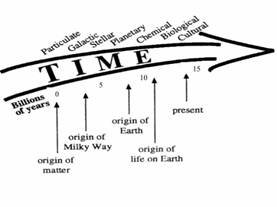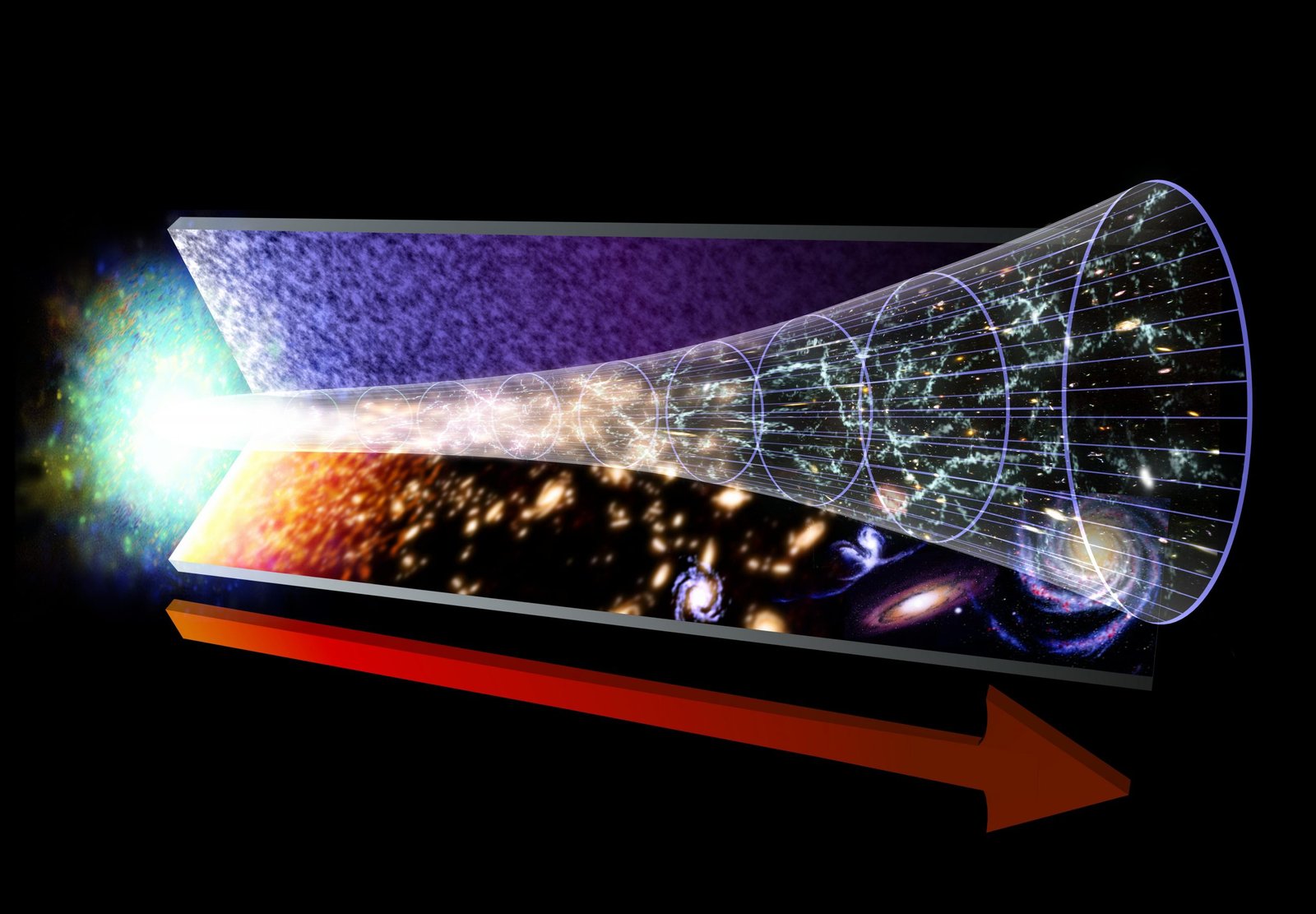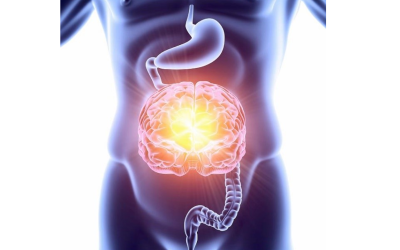But thought’s the slave of life, and life is time’s fool,
And time that takes survey of all the world,
Must have a stop.
William Shakespeare in Henry IV
Using this Shakespeare quote as a starting point, Aldous Huxley in Time Must Have a Stop (1945) writes:
“Life’s time’s fool. By merely elapsing, time makes nonsense of all that life consciously schemes for in the temporal order. In all actual human situations more variables are involved than the human mind can take account of; and with the passage of time the variables tend to increase in number and change their character.
But Hotspur’s [a character in Henry IV] summary has a final clause: time must have a stop. And not only must, as a prophecy or an ethical imperative, but also does have a stop here and now, for all who so desire. It is only by taking the fact of eternity into account that we can deliver thought from its slavery to life. And it is only by deliberately paying our attention and our primary allegiance to eternity that we can prevent time from turning our lives into a pointless or diabolic foolery.”
The spiritually inclined feel that it is crucial to develop communion with both the living reality of the natural world from which our own physical existence arises as well as with the all-enfolding divine life that is the unseen meshwork of our daily living reality. The 13th century philosopher and mystic Meister Eckhart writes: “The soul is created in a place between time and eternity; with its highest powers it touches eternity, with its lower, time.” The higher world of eternity and this world of time converge within the human soul.
The world of our living reality is always in a state of flux. The ancient Greek philosopher Heraclitus wrote: “Everything happens through strife. Reality is a condition of unrest.” As a result, much of the consciousness allotted for immersion in the precincts of the higher soul is diverted toward the ramparts of the daily struggle.
The ideal self (the polar opposite of the real self) is that aspect of one’s self-structure associated with socially controlled behavior that is designed to accommodate the ideas and expectations of others. Thus, we are programmed from an early age to believe that it is “ideal.” In the Timaeus, Plato differentiates between the consciousness of the inner spiritual self (the core of the real self) and that of the outer ideal self. “We must make a distinction between the two great forms of being, and ask: What is that which Is and has no becoming [the real self], and what is that which is always becoming and never Is [the ideal self]?
In the ancient world, when human beings lived in continuous contact with nature and in harmony with the rhythms of the natural universe, they were able to maintain a vibrant connection with the higher world of eternal being while fending off the challenges of mortal life, which, to paraphrase Plato, is “always becoming but never is.” Unfortunately, for most modern people, spiritual matters are largely sequestered beyond the margin of daily existence because their entire consciousness is preoccupied with the “condition of unrest.”
We can view the human soul as being operative in two worlds: the World of Becoming (the physical world of the senses) and the World of Being (the transcendent world of spirit). Of course it is crucial to develop communion with both the living reality of the universe, the natural world or world of becoming from which our own physical existence arises as well as from the world of being, the all-enfolding divine life that is the unseen meshwork of the living reality.
In Spiritual PhytoEssencing (SPE), the blender is taught to practice at the junction point of these two stages of reality –the world of the senses and the spiritual world. You cannot begin to understand the inner nature of the oils absent union with the natural world. When we live in harmony with the rhythms of the natural universe, we can begin to perceive the beauty of the oils. However, this perception of beauty must not only please the senses but also act as gateway to developing relation with the spirit within the oils.
The 19th century German philosopher, G.W.F. Hegel wrote: “Beauty is merely the spiritual making itself known to the senses.” In the beauty of the natural world we get a glimpse of the higher world revealing its personal character. In turn, when we get these glimpses we are able to strip away some of the veils of the world of becoming that keep us estranged from the higher aspect of our souls and communion with the world of Being – divine reality.
If we operate from the premise that the human soul is a spark of divine light, we cannot help but agree with the 12th century Catholic monk Bernard of Clairvaux when he states: “In those respects in which the soul is unlike God, it is also unlike itself.” In a similar vein, the ancient Chinese philosopher Sen T’sen observed: “When the Ten Thousand things are viewed in their oneness, we return to the Origin and remain where we have always been.”
The basic conflict of all those who are spiritually conscious: the simultaneous yearning for higher light and attachment to that which shadows that light. In other words, the basic dilemma is the need to resolve the tension between Becoming and Being.
Spiritual PhytoEssencing is a soul-level healing art which employs highly individualized combinations of essential oils intended to help spiritually conscious individuals overcome a state of psycho-spiritual stasis. That stasis is commonly the product of enmeshment within the workings of those lower precincts of the soul that sustain the ideal self/survival personality as well as the primal drives and instincts of our animal nature.
This bondage perpetuates an estrangement from the real self, which emanates from that aspect of the soul that never turns from its unitive knowledge of the transcendent spiritual ground of all being. In turn, this estrangement represents the central soul-level disturbance that underlies much of the emotional and physical disharmony afflicting modern man.

Pace, Duration and the Perception of Time
The perception of time is dependent upon the relationship between pace and duration. The faster the pace of one’s daily life, the shorter the duration of periods of time seem to be. Conversely, the slower the daily pace of one’s daily life, the longer the duration of periods of time seem to be. While a day, just like it has always been, is still 24 hours long, there is no question that the general perception is that days, months and years now pass more quickly. Of course, when you are an older adult, the fraction of the remainder of your lifespan that a day represents is much larger than when you are a child.
The Arrow of Time

The Arrow of Time is a concept developed by early 20th century British astronomer Arthur Eddington regarding the one-way direction of time.
In his book The Nature of the Physical World (1928), Eddington provided key observations about this arrow, including:
1) It is vividly recognized by consciousness.
2) It is equally insisted on by our reasoning faculty, which tells us that a reversal of the arrow would render the external world nonsensical.
The cosmological arrow of time points in the direction of the expansion of the universe. Cause precedes effect: a causal event occurs prior to the event it elicits. For example, birth succeeds conception and not vice versa. Thus, the phenomenon of cause and effect is integrated with time’s arrow.
The mental perception of the arrow of time arises from the sense that one’s conscious perception is a continuous transit from the known (past) to the unknown (future). Anticipation of this unknown imbues the psychological future with the quality of something one is continuously moving toward. However, this perception is partly illusory as it gives rise to the perception of desires, dreams, and hopes, which are already part of established memory, as being positioned ahead of the observer along the arrow of time.

According to Eddington, time’s arrow is a property of entropy alone.
Entropy
Big Bang

The One, the all-pervasive cosmic mind or creative force, is the source of all consciousness. Consciousness expresses itself as energy which, in turn, manifests as wave forms.

The universe was born approximately 14 billion years ago. Initially all of the universe’s matter and energy was compressed into an infinitesimally small volume. At this time, all matter was compacted into a very small ball with infinite density and intense heat called a Singularity. Suddenly, the Singularity began expanding, and the universe as we know it began. It began expanding explosively at a stupendous rate. Within minutes, the universe had grown to the size of the solar system and cooled enough so that equal numbers of protons, neutrons, and the simplest atomic nuclei had formed.
The universe emerged from the One, imbued with cosmic mind as an impeccably ordered wave form of space and time – a divine out-breath. In any system, order will always tend toward disorder. So the initial perfect order of space and time could only evolve in one direction – toward greater overall disorder. Twentieth century mathematician James R. Newman states: “Entropy is the general trend of the universe toward death and disorder.”
Cosmologists believe this launching of entropy to have enabled the direction of time – referred to as the “arrow of time”– to be actualized. Eddington connected “Time’s Arrow” to the one-way direction of increasing entropy required by the second law of thermodynamics. This is now known as the “thermodynamic arrow.”

Archetypes in Spiritual PhytoEssencing
In Spiritual PhytoEssencing, the term archetype refers to a unique intangible construct (i.e., deep form) of the soul that generates a pattern of characteristic potentials. Accordingly, particular identifiable patterns of emotions and physical predispositions are viewed as tangible expressions of underlying psycho-spiritual archetypes. In turn, these expressions are considered to be archetypal images.
Spiritual PhytoEssencing case-study analysis largely depends upon the ability to perceive archetypal modes and trace these back to specific archetypes. An archetypal mode (a type of archetypal image) is a specific combination of selected perceptual filters (how the individual evaluates her life experiences and then represents them in her consciousness) employed by the ego-mind and a particular psychosocial role (persona) that the ego activates in relation to everyday experiences. Archetypal modes are essentially a combination of behavioral and reactional modes.
Miasms in Spiritual PhytoEssencing
A miasm is the homeopathic concept that I have adapted into Spiritual PhytoEssencing of an archetype with a characteristic pattern of archetypal images (including archetypal modes) which is transmitted from generation to generation bioenergetically rather than genetically. In SPE, it is believed that miasms can also be transmitted from one incarnation to the next along the cycle of birth, death and rebirth.
Although most of the miasms are named for particular diseases such as cancer or tuberculosis, a miasm itself is not an actual disease state, but rather, a soul archetype that generates a complex of constitutional traits and reactional tendencies that resemble the presentation and/or thematic pattern of the disease for which it is named.
Accordingly, each of the miasms has characteristic physical and emotional qualities (i.e., archetypal images) and symptoms, which, in conjunction, announce its presence. Similarly, essential oils — based upon their plant characteristics and history, the nature of the symptoms for which they are specific as well as their diverse portfolio of synchronicities (e.g., Six Element, gemstone, homeopathic remedy, etc.) — have a special affinity for one or more of the miasms.
The identification of an individual’s prominent miasmatic influences, and specific essential oil responses to them, helps in differential diagnosis regarding essential oil selection. Also, it opens up a new, heretofore unexplored, dynamic in work with essential oils that enables the practitioner to more effectively penetrate the layers of superficial symptoms in a case and gain access to the germinal, central disharmony on the psycho-spiritual plane.
TYPHOID MIASM
In this digital age, when pace has accelerated exponentially and duration, thus, seems to have decreased, the expression of the Typhoid miasm archetype in many individuals has become far more common than in earlier, slower paced eras. Of course, this is exacerbated by the accelerated pace of entropy induced by massive climate change. In concert, these factors encourage the perception that one is sliding uncontrollably down the chute of the arrow of time.
W.H. Auden in his poem Atlantis encourages one to “Stagger onward rejoicing.” While the staggering part is becoming the norm for most people, the rejoicing part has been supplanted by the anxious realization that their time may be running out.
The central themes of the Typhoid miasm are: danger of losing your place of comfort if you don’t do something soon; sudden loss; critical period; danger, risky, urgency; do or die—either successfully resolve the crisis through short, intense effort or die if the effort fails; impatience; taking risks.
There is a focus upon: recovering lost ground—wants the same thing back that he has lost; reaching a position of comfort; grab it, want it all right now; an intense short effort is needed in order to find rest. In the failed state of this miasm, there may be collapse, loss of will, inactivity, defeatism.
The actual disease of typhoid has a prolonged prodromal period with feelings of malaise days before significant spiking of fever. The potentially life-threatening fever is continuous, rising higher each day. Typhoid fever represents an intense struggle against an acute external threat. The feeling is: It is a critical situation which if properly managed will result in total recovery, but improper management may prove fatal.
Typhoid Miasm Oils
In Spiritual PhytoEssencing, the following oils are associated with the Typhoid miasm: balsam poplar; bitter orange peel; cassie; catnip; citronella; dill; fenugreek; oregano; petitgrain bigarade; santolina; thyme; turmeric.
Also, certain non-Typhoid miasm oils are specific for fearfulness of aging due to the rapid passage of time, including: lemon, palo santo, saro, vetivert, yarrow and ylang ylang.
When preparing deep-acting, soul-level healing blends for individuals whose lives seem to be caught up in the racing river of entropy and whose perceptual filters, reactional tendencies and decision-making processes are strongly influenced by the awareness of the acceleration of the arrow of time, consider some of these oils for inclusion in that blend. If the blend is well-made and engages a person’s core disharmony, perhaps he or she will come to understand that life need not necessarily be time’s fool and that, within the realm of the heart-going mind, time does have a stop.
Note: A complete monograph/chapter dedicated to each of the oils listed above are found in Berkowsky’s Synthesis Materia Medica/Spiritualis of Essential Oils. These monograph chapters (approximately 20+ pages each) can be purchased individually or as part of the entire Berkowsky’s Synthesis Materia Medica/Spiritualis of Essential Oils collection of 120+ essential oil monograph/chapters.







